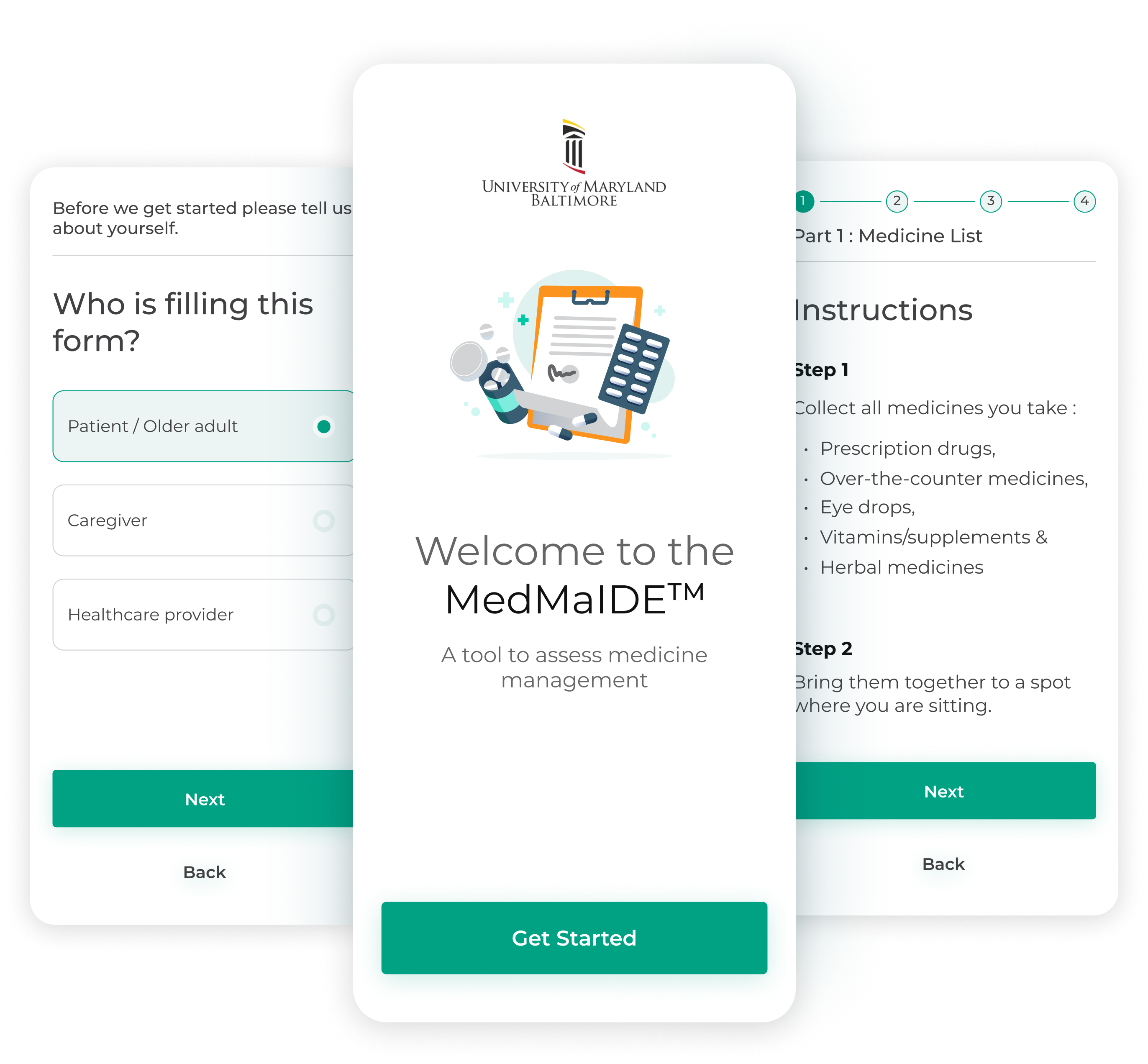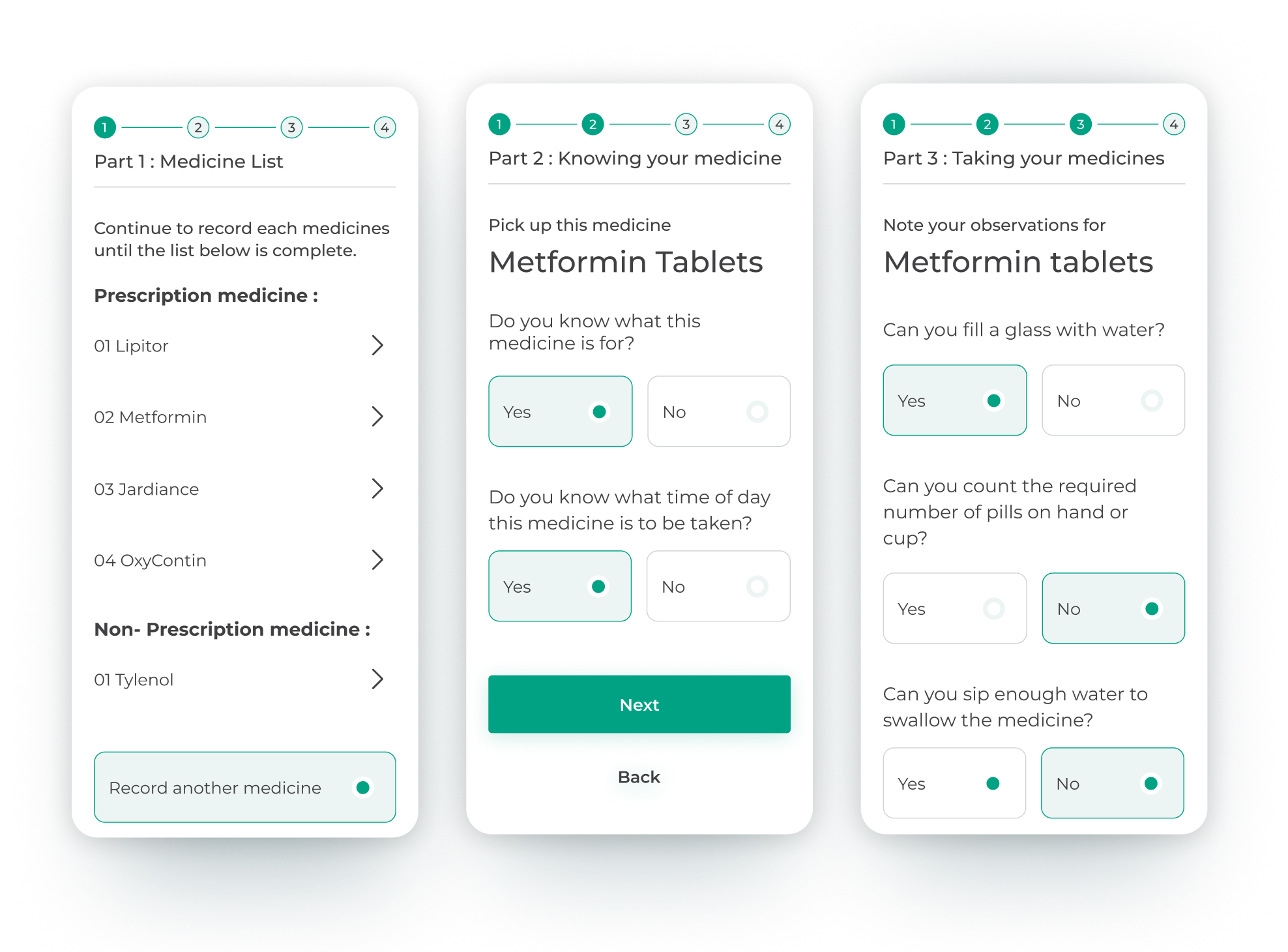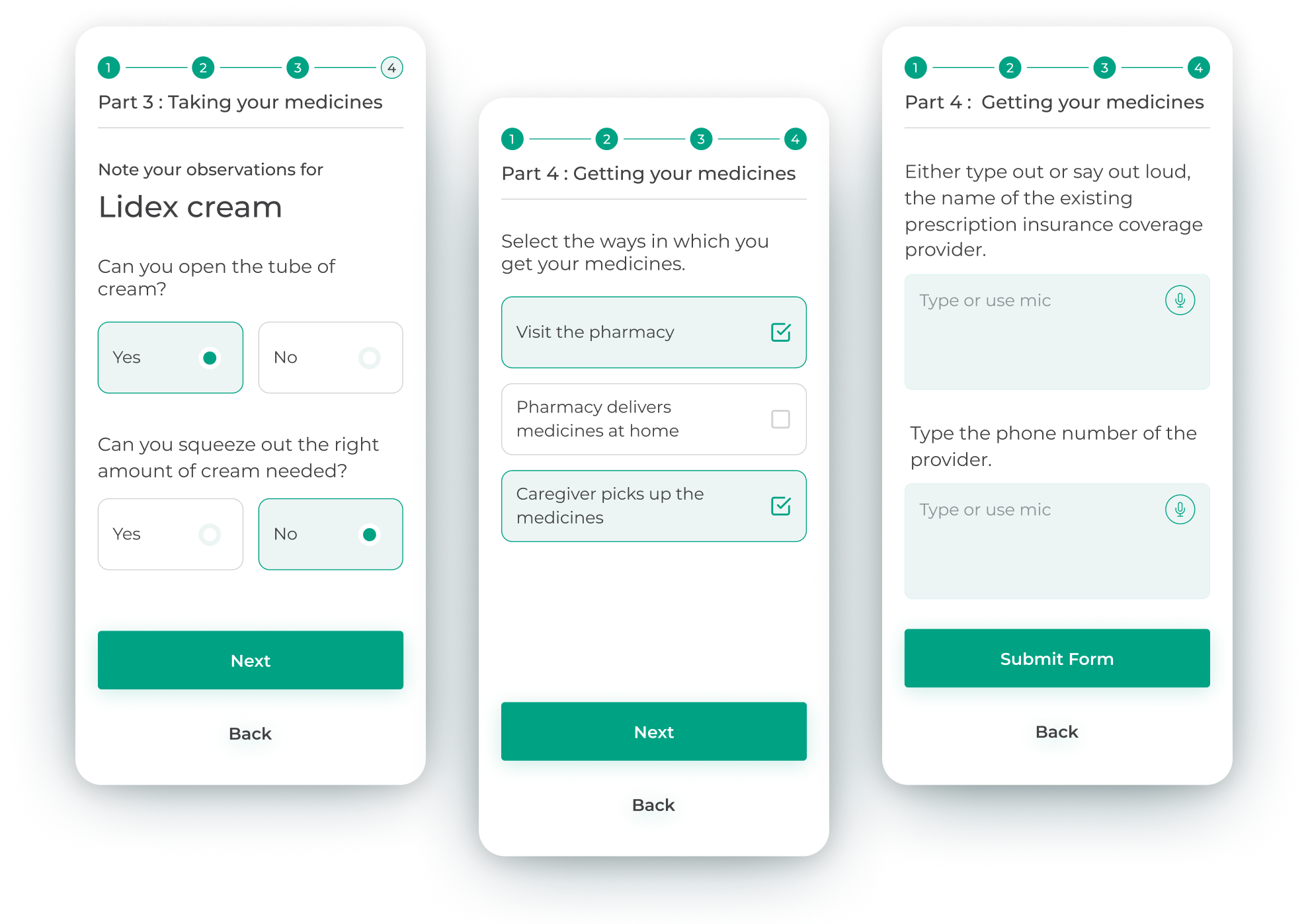MedMaIDE
MedMaIDE™ is an assessment tool to examine an elderly patient’s comprehension of their prescribed medication ; their knowledge of the dosage ; and their ability to procure prescription medications.
Business Challenge
Individuals over 65 are the leading consumers of medicines in the United States. Non-compliance or non-adherence of prescription medication is the second largest health problem in the United States.Medication management for this age group is a complicated process, involving selecting the right drug, reading prescription labels, opening safety caps, removing pills, pouring out syrup, ensuring that the patient can consume it correctly and understanding side effects.
The University of Maryland - School of Pharmacy partnered with Twist Open UX to turn a paper form into a web-based tool that could be easily used by older adults on their phone at home. The Medication Management Instrument for Deficiencies in the Elderly (MedMaIDE) web tool yields a deficiency score to assess medication compliance.
UX & Interaction Design
First, we defined the objectives of the tool, which include capturing medication details, assessing adherence and facilitating intervention plans. We identified the specific requirements based on the needs of elderly patients and healthcare professionals who would receive the score.
Next, we brainstormed ideas and concepts for the assessment tool, paying special attention to accessibility while collecting data from the elderly patient. We developed prototypes of the assessment tool, tested it with a diverse group of elderly patients and refined the design based on the feedback gathered.

Pain points addressed
Our main goal was to create a user interface that was both simple and comprehensible, catering to elderly patients who might have trouble reading or using digital devices effectively due to their ailments. During the design process, we carefully considered these factors to ensure inclusiveness and usability.

We introduced alternative input formats such as voice notes, pictures or videos to make the communication richer and easier for patients who may have impaired hand eye coordination and fine motor control.We simplified the language into lay terms so it could be used by people who were not health care professionals (e.g. family members), we changed the sequence of questions to reduce cognitive load and ensuring maximum compliance and we modified the response options to allow for a score.

